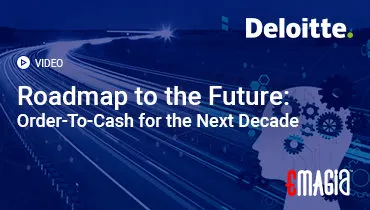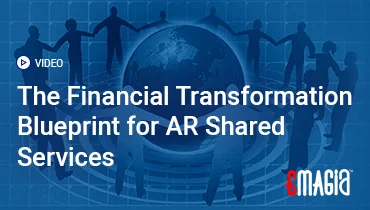Mastering the Art of Vetting New Customers and Suppliers for Financial Stability
In the world of business, extending credit to a new customer or engaging a new supplier is an act of trust. This trust is built on the belief that they are financially stable and will honor their commitments. However, relying on a handshake and good faith alone can expose your business to significant risk. This is where the strategic practice of checking trade references becomes an indispensable part of your financial due diligence. A trade reference, provided by a company that has previously done business with your prospective partner, offers a crucial glimpse into their payment history and overall business conduct. It’s a powerful tool for vetting, risk mitigation, and ensuring the health of your cash flow. This comprehensive guide will walk you through the entire process, providing a step-by-step framework on how to check trade references effectively. We’ll cover everything from what questions to ask to how to interpret the feedback, empowering you to make informed decisions that protect your business.
Part 1: The Essential Foundation of Trade Reference Checks
Before you can begin, it’s vital to understand the purpose and importance of a trade reference check. This section lays the groundwork for a successful and insightful vetting process.
- What is a Trade Reference?: We will define a trade reference as a professional endorsement from a business’s vendor, supplier, or service provider, detailing their payment habits and business relationship.
- The “Why”: We will explain the core reasons for conducting these checks, including minimizing bad debt, assessing financial reliability, and validating the legitimacy of a new business relationship.
- The “Who”: We will identify who you should be asking for references from—not just customers, but also suppliers and banks.
Part 2: The Step-by-Step Process for a Thorough Investigation
Knowing how to check trade references is about more than just making a phone call. It’s about a strategic process of gathering and analyzing information. This section will provide a practical, detailed workflow.
Preparing for the Check
- Requesting References: We’ll provide a template and best practices for politely and professionally requesting a list of trade references from your prospective partner.
- Drafting Your Questions: This is the most critical step. We will offer a list of essential questions designed to elicit candid and useful information about payment history, terms, and the overall business relationship.
- Permission and Confidentiality: We will emphasize the importance of obtaining permission from the reference provider and assuring them of the confidentiality of their feedback.
Conducting the Check
- Making the Call: We will provide tips for a successful conversation, including how to introduce yourself, state your purpose clearly, and establish rapport.
- Key Questions to Ask: A deep dive into the specific questions you should be asking, such as “What is their typical payment behavior?”, “Are their payments consistent?”, “Have they ever been on credit hold?”, and “How long have you been doing business with them?”.
- Red Flags and Warning Signs: We will highlight subtle cues and responses that may indicate a potential problem, such as evasive answers, short-term relationships, or a reluctance to provide specific details.
Analyzing the Findings
- The Art of Reading Between the Lines: We will teach you how to interpret the feedback, recognizing that references may be reluctant to provide negative information directly.
- Synthesizing Information: The importance of cross-referencing information from multiple sources—including the trade references themselves, credit reports, and your own interactions with the prospect—to form a comprehensive picture.
Emagia’s Proactive Approach to Customer Vetting
While manually checking trade references is a necessary step, the digital age offers more efficient and intelligent ways to vet new customers. Emagia’s platform revolutionizes this process by providing a comprehensive, automated solution for credit risk assessment. Instead of relying on manual calls and subjective feedback, our system can ingest and analyze a wide range of data points—from public records and credit bureau reports to their financial statements and your own historical data—to generate an accurate and objective credit score. This approach helps you make faster, more confident credit decisions, and set appropriate credit limits. By leveraging AI and machine learning, we not only help you identify high-risk customers but also empower you to onboard financially sound business partners more quickly, accelerating your revenue cycle and protecting your cash flow from the very beginning of the relationship. Our platform helps you to manage and automate your credit policies in a seamless way so that you can reduce manual effort and mitigate risk from bad credit.
Frequently Asked Questions About Trade References
Why is checking trade references a critical step in the credit process?
Checking trade references is critical because it provides direct, real-world evidence of a company’s payment history and financial reliability. It’s a proactive measure that helps you avoid potential losses from non-payment and build relationships with trustworthy partners.
What information should I request when asking for a trade reference?
You should request the name of the company, the contact person’s name and title, and their contact information (phone number and email). It’s also helpful to ask for the duration of their business relationship and the typical credit terms they extend.
How many trade references should I check for a new customer?
A good practice is to ask for at least three trade references. This allows you to cross-reference information and gain a more balanced and accurate view of the company’s payment habits from multiple sources.
What if a potential customer is reluctant to provide references?
Reluctance to provide trade references is often considered a major red flag. It may indicate that the company has a poor payment history or is not as financially stable as they claim. Proceed with caution, and consider alternative forms of payment, such as prepayment or a smaller initial order, or simply decline the business.
What is the difference between a trade reference and a credit report?
A trade reference is personal, anecdotal information from a peer, whereas a credit report is a standardized, data-driven report from a credit bureau that details a company’s borrowing history, payment patterns, and other financial data. They should be used together for a comprehensive view.



